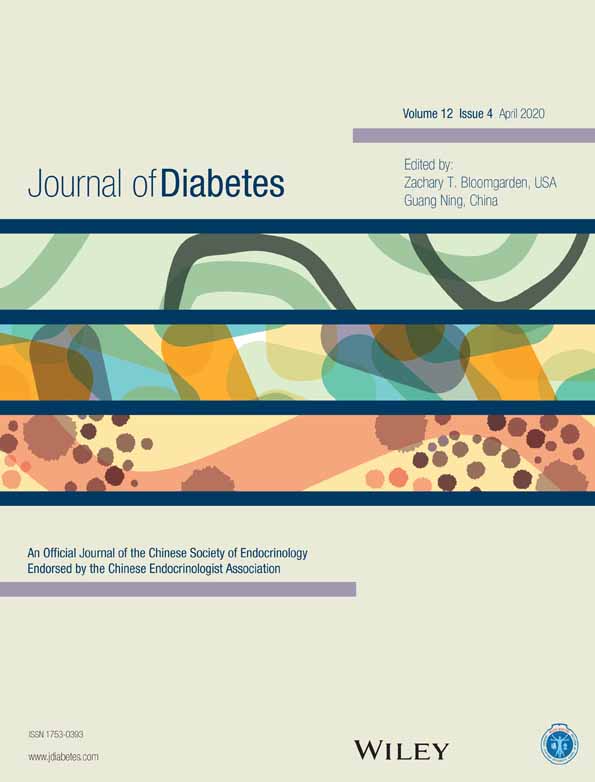Use of online information in diabetes
网络信息在糖尿病中的应用
In the present issue of the journal, Zhao and colleagues endeavor to further our understanding of the associations between dietary preferences and risk of diabetes by making use of an extraordinary data set.1 From the Baidu search engine and meal-ordering app, meal and food-ordering choices and recipe searches made by 212 341 708 anonymized persons, more than a sixth of the adult population in China, were used to determine the distribution of Chinese dietary preferences for fried food, grilled food, spicy food, tongue-numbing food, instant-boiled food, and sweet food. In addition, the much smaller but still large 2010 China Noncommunicable Disease Surveillance of 98 658 persons was used to determine geographical patterns of diabetes, hypertension, body mass index, and fasting and postprandial blood glucose levels.
Some of the findings are unsurprising. Fried and grilled foods, and, to a lesser degree, sweet foods, were positively associated with diabetes. Spicy foods, however, showed a negative association (and an even stronger negative association with fasting and postprandial glucose levels). Individuals living at high latitude and those living in an area lower winter temperature showed a highly significant increase in fried food consumption, whereas high-altitude residence was associated with significant increase in tongue-numbing foods and, even stronger, a significant decrease in sweet food consumption. Residence in areas with high “economic consumption” was associated with increased sweet food consumption. The additional use of gender and six different levels of age grouping allowed further subdivision of the population studied and revealed greater fried and sweet food preference among women than men and particularly great decrease with age in preference for grilled and instant-boiled foods.
The authors made an important decision, stating, “as an ethical and privacy protective study, the relation analysis was not made at the individual level.” However, simply aggregated into 31 distinct geographical locations in China, the use of dietary preference data was sufficiently powerful to explain more than 85% of the variance in diabetes prevalence, ranging from <10% to >20% of the adult population in the various regions.
Many other studies have used online information in understanding aspects of diabetes. A study using “Google Trends,” the application viewing trends in Google searches for specific keywords, suggested that this might in essence be a candidate risk variable for diabetes, allowing ascertainment of persons using the search engine for self-diagnosis.2 Another approach to web-based diabetes case finding queried the electronic medical record database used in the state of Maine with text-based chart analysis to find that nearly one tenth of persons with diabetes were not assigned this diagnosis in the medical record.3 A recent news article in the Wall Street Journal states that Google is making a major effort to “lay claim to health data” and has established a Google Health division to include “health data as a natural extension of its stated mission to organize information.”4
Given the power of the methodology explored by Zhao and coworkers, and the interest in individual-level healthcare information of Google and, presumably, of megacompanies with access to similar information, such as Amazon, Facebook, and Twitter in the United States; Baidu, Alibaba, and Tencent in China; and presumably many others, will it be long before such healthcare information is more generally utilized? There certainly will be advantages of such information access in improving healthcare outcomes, and we need to determine optimal approaches to achieving these benefits in a fashion that respects individuals' privacy.
DISCLOSURE CONSULTANT/ADVISOR
Astra Zeneca, Merck, Novartis, Boehringer Ingelheim, Sanofi; Stockholder: Johnson & Johnson, Humana, Novartis.
在本期杂志中, 赵和他的同事们通过利用一组颇为特别的数据集来加深我们对饮食偏好和糖尿病风险之间关系的理解。通过百度搜索引擎和订餐应用程序, 212341708名匿名参与者(占中国成年人人口的六分之一以上)的点餐和食谱选择被用来确定中国人对油炸食品、烧烤食品、辛麻食品、即煮食品和甜食的偏好分布。此外, 在规模相对小得多但仍具有规模的2010年中国非传染性疾病监测研究中, 98658人被用来研究糖尿病、高血压、体重指数以及空腹和餐后血糖水平的地域分布情况。
其中一些发现在意料之中。油炸、烧烤食品以及甜食在某程度上与糖尿病呈正相关。然而, 辛辣食物显示出负关联(与空腹和餐后血糖水平的负相关程度更强)。居住在高纬度和冬季气温较低地区的人, 油炸食品的消费有显著的增加, 而居住在高海拔地区的人, 辛麻食物的偏好有显著增加, 甜食的消费则明显减少。居住在“高消费”地区与甜食食用的增加相关。性别和6个不同年龄的分组使得研究人群可以被进一步细分, 研究发现女性比男性更喜欢油炸和甜食, 而随着年龄的增长, 对烧烤和即煮食品的偏好显着下降。
作者做了一个重要的决定, 指出了“作为一项伦理和隐私保护研究, 这种关系分析不是在个人层面上进行的。” 然而, 仅仅是简单考虑在中国31个不同的地理区域, 饮食偏好数据足以解释糖尿病患病率的85%以上的变异, 各地人口范围从小于10%到大于20%不等。
已经有许多利用网络信息关于糖尿病方面的研究。谷歌趋势(Google Trends)是在谷歌搜索特定关键字时查看趋势的功能, 而这可能是糖尿病的潜在风险变量, 从而确定使用搜索引擎进行自我诊断的人。另一种基于网络的糖尿病病例查找方法通过基于文本的图表分析, 查询缅因州( Maine)使用的电子病历数据库, 结果发现近十分之一的糖尿病患者没有在病历中被诊断。“华尔街日报”最近的一篇新闻文章称, 谷歌正在做出重大努力来“证明拥有健康数据”, 并成立了谷歌健康部门, 将“健康数据纳入其组织信息使命的当然延伸。””。
鉴于赵和同事的研究方法所展示的力量, 以及谷歌公司对个人级别的医疗信息的兴趣, 想必还有一些可以访问类似信息的大公司, 如美国的亚马逊、脸书和推特, 中国的百度、阿里巴巴和腾讯, 以及可能还有很多其他公司, 这样的医疗信息是否还需要很长时间才能被广泛地利用?这些信息在改善医疗保健结果方面肯定会有好处, 但我们需要以尊重个人隐私的方式来实现。




